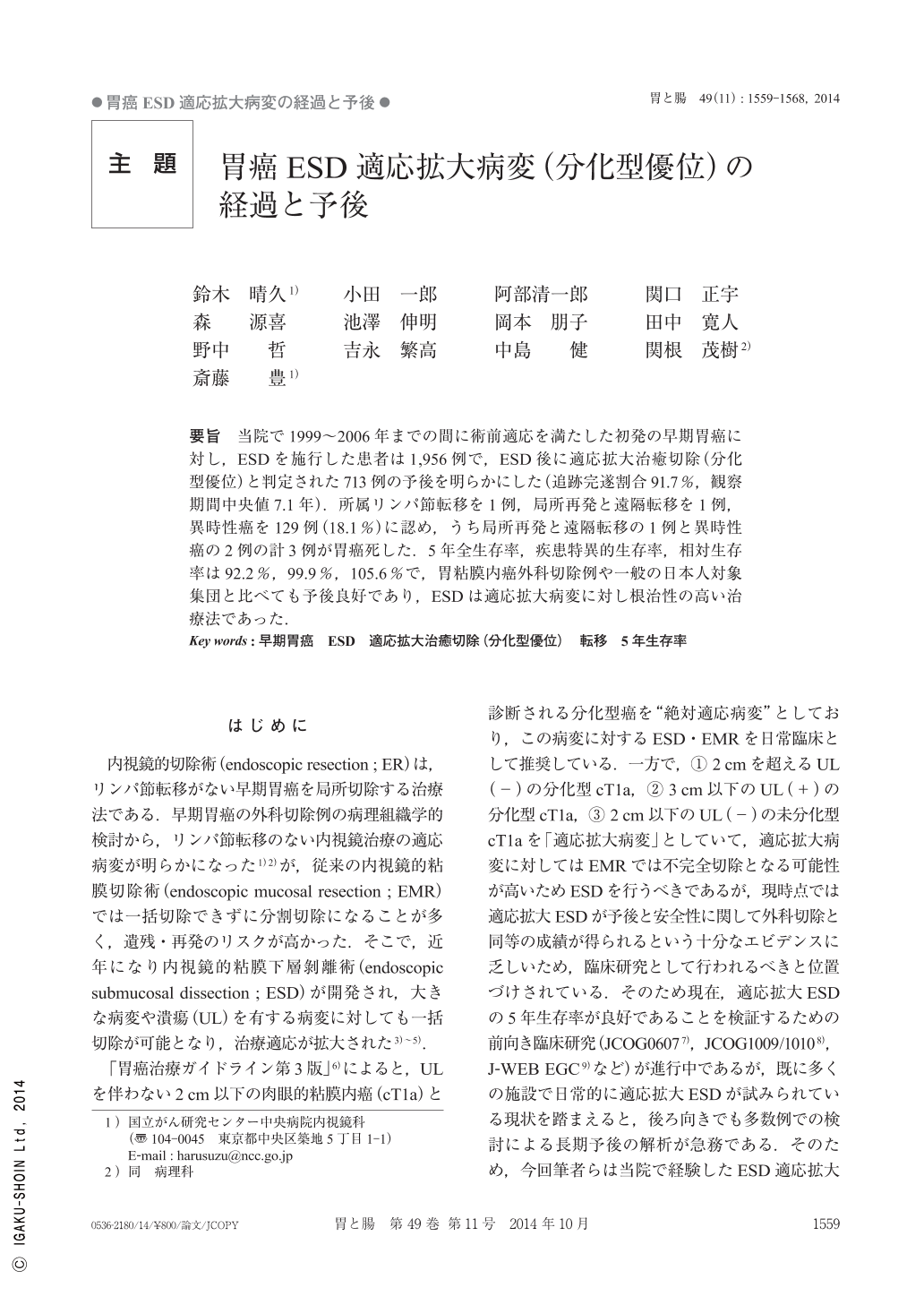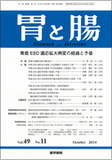Japanese
English
- 有料閲覧
- Abstract 文献概要
- 1ページ目 Look Inside
- 参考文献 Reference
要旨 当院で1999〜2006年までの間に術前適応を満たした初発の早期胃癌に対し,ESDを施行した患者は1,956例で,ESD後に適応拡大治癒切除(分化型優位)と判定された713例の予後を明らかにした(追跡完遂割合91.7%,観察期間中央値7.1年).所属リンパ節転移を1例,局所再発と遠隔転移を1例,異時性癌を129例(18.1%)に認め,うち局所再発と遠隔転移の1例と異時性癌の2例の計3例が胃癌死した.5年全生存率,疾患特異的生存率,相対生存率は92.2%,99.9%,105.6%で,胃粘膜内癌外科切除例や一般の日本人対象集団と比べても予後良好であり,ESDは適応拡大病変に対し根治性の高い治療法であった.
ESD(endoscopic submucosal dissection)has been used to treat patients with EGCs(early gastric cancers), including large and ulcerative lesions. However, few published data exist on the long-term outcomes of this treatment. We retrospectively analyzed the long-term outcomes in 713 patients who underwent curative ESD for expanded indications of differentiated-type EGC at our hospital from 1999 to 2006. The median follow-up period was 7.1 years, and 91.7% of patients could be successfully followed-up from the perspective of obtaining survival information. Among them, one patient developed regional lymph node metastasis and another developed distant lymph node metastasis, with local recurrence resulting in gastric cancer-related death. In addition, 179 MGCs(metachronous gastric cancers)were detected in 129 patients(18.1%), and two patients died due to MGCs. The 5-year rates of overall survival, disease-specific survival, and relative survival were 92.2%, 99.9%, and 105.6%, respectively. This study is the first to report favorable 5-year survival for curative gastric ESD for expanded indications of differentiated-type EGC in a large consecutive patient series with a median follow-up period of over 5 years.

Copyright © 2014, Igaku-Shoin Ltd. All rights reserved.


